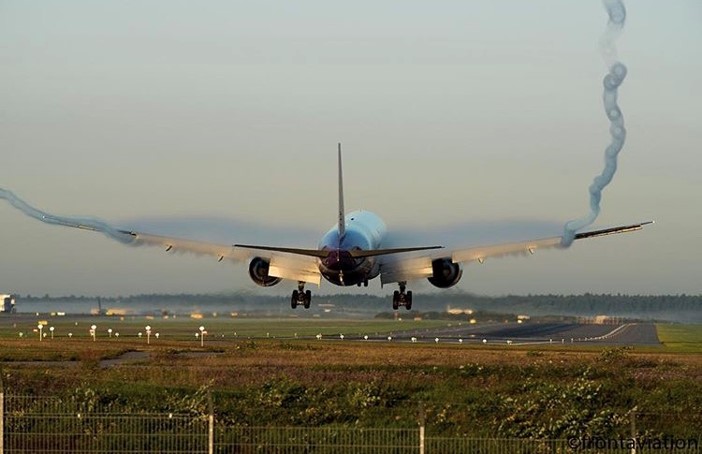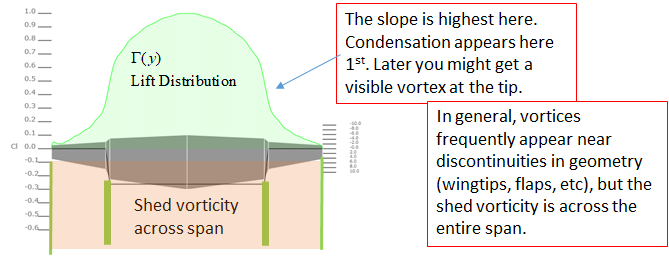Q: Could you explain to me why the vortex does not appear to be coming from the tip of the wing, but rather several feet closer to the fuselage on this Boeing 777?

A: Good question. The answer is that the vortex is visible where the change in lift distribution -and thus, shed vorticity- is highest. The flaps are extended, which creates a sharp discontinuity in the wing geometry and lift distribution.
Here’s the physics:
- The extended flaps increase both the wing area and the effective angle of attack for the inboard wing. (see: Thin airfoil theory)
- The increased area and angle of attack increase the lift being generated on the inboard panel.
- Shed vorticity is proportional to the spanwise derivative of the lift distribution.
- The vortex rotation decreases the local air pressure and temperature below the dew point. Water vapor condenses into a fine mist. We see this fine mist.
- The vorticity is transported downstream (i.e. Helmholtz rule #3)

More information:
- Notice the spanwise lift coefficient is visually displayed with a vapor cloud above the upper wing. This cloud confirms that the spanwise lift coefficient has the largest decrease at the flap tips.
- You should remember that the entire wing is shedding vorticity. We see the vortex at the flap tip. If the humidity were higher, we might see additional vorticies.
- Ground effect is responsible for the slight outboard track of the visible vortex. As the aircraft descends further, the shed vortex will likely be pushed further outboard; induced drag (for a given CL) will decrease.
- It is not true that a vortex is only generated at wingtips or flap tips. Physics demands a smooth lift distribution (regardless of what we see).
